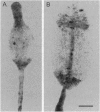Abstract
When Dictyostelium discoideum cells are drawn into a fine glass capillary, they rapidly begin the first steps toward the formation of prestalk and prespore zones. Some of the events occur within a minute or two, whereas others follow later. The cells in the front segment are actively motile and those in the hind segment are passive. The volumes of the segments are proportional for different-sized cell masses, and those proportions are the same as those found in normal slugs. When the cells are stained with the vital dye neutral red, the anterior zone becomes darker simultaneously with the formation of the division line. Green fluorescent protein expressed from a stalk-specific promoter is synthesized mostly in the anterior end. Later, this capillary prestalk zone shows a sharp increase in alkaline phosphatase activity, which is known to be characteristic of prestalk cells.
Full text
PDF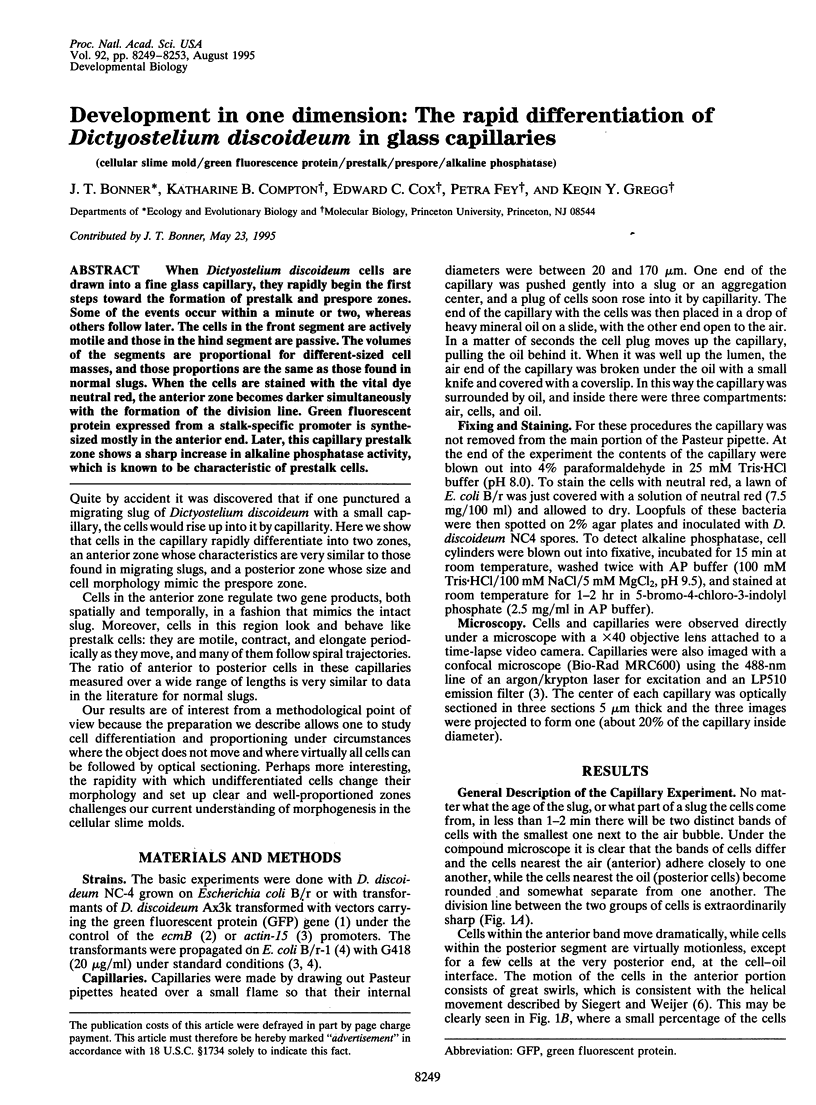
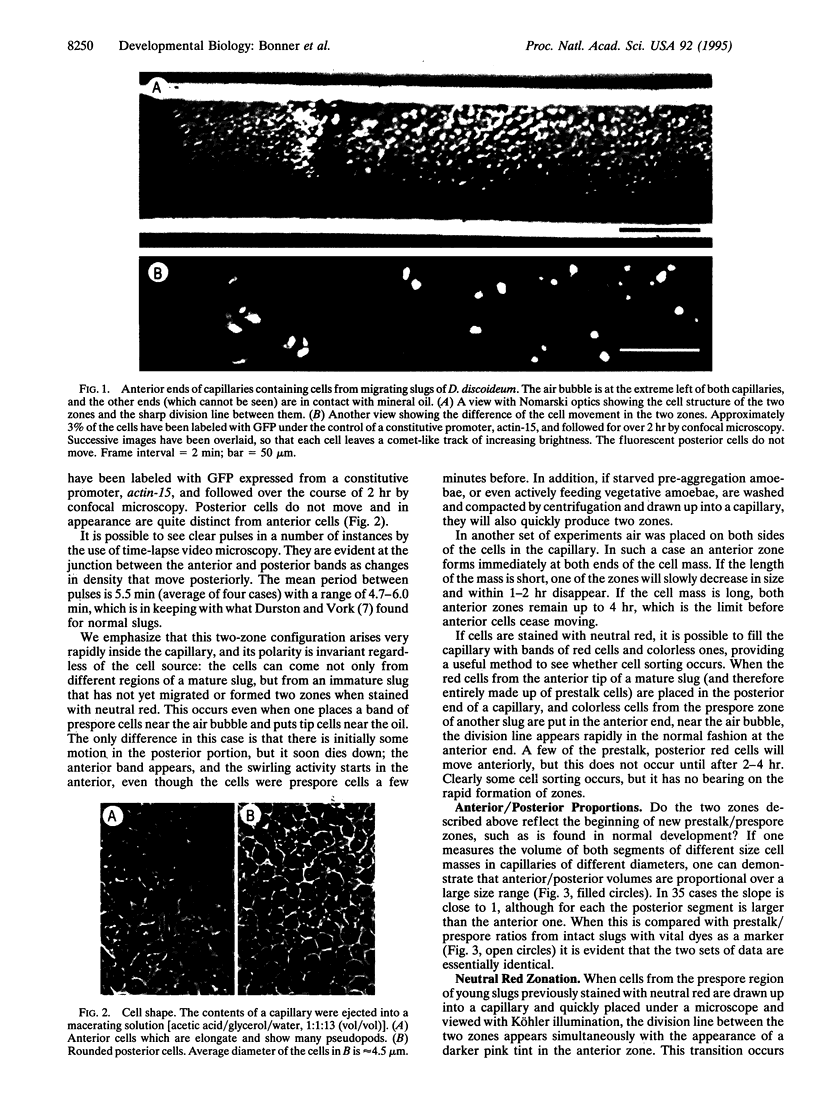
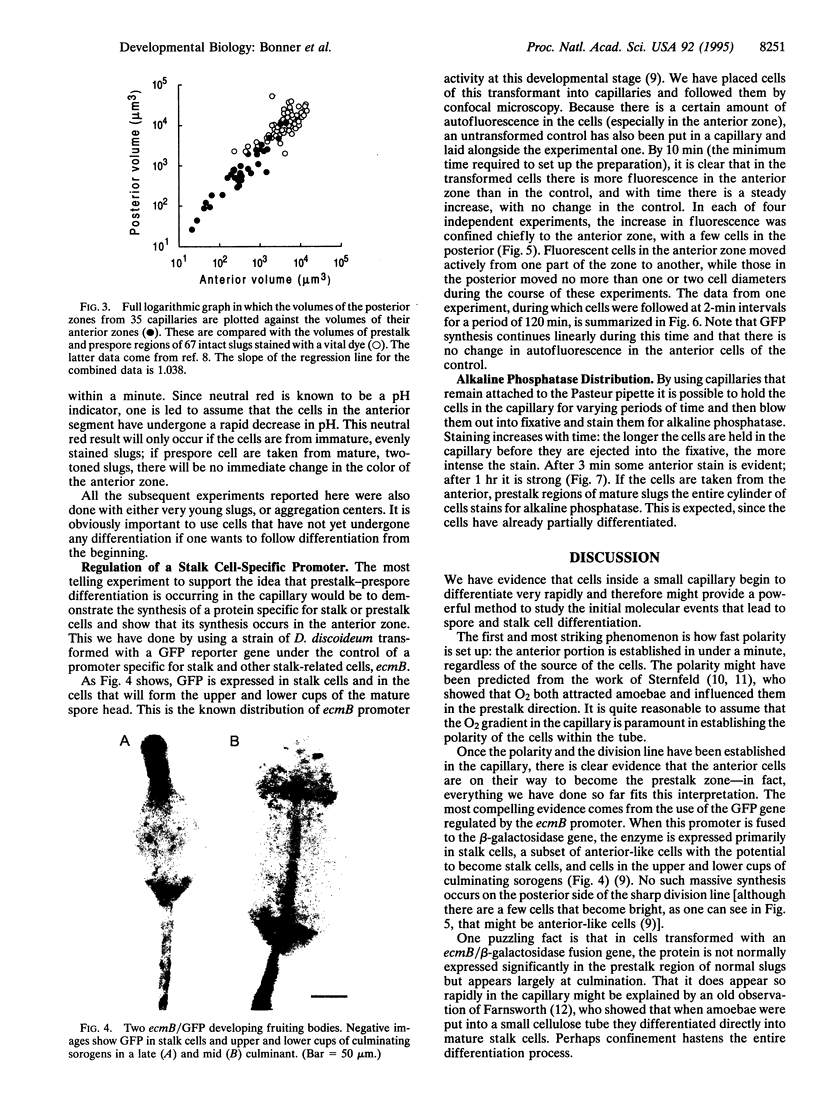
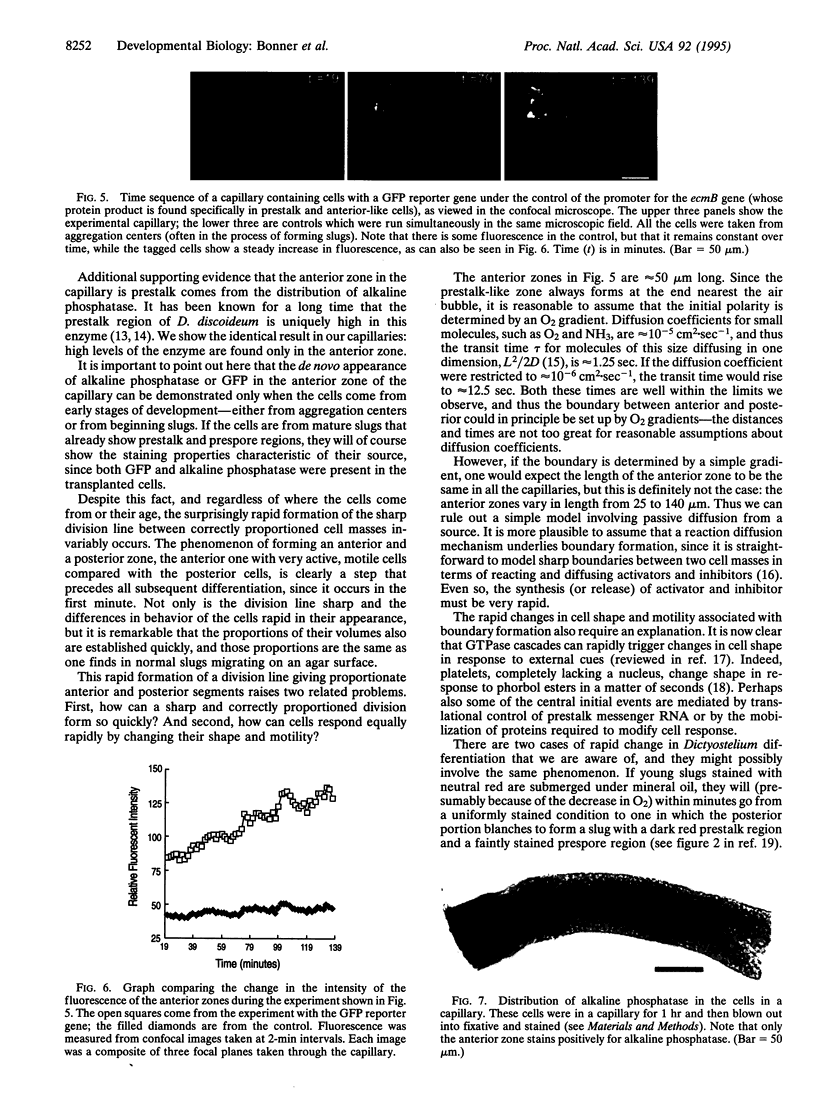
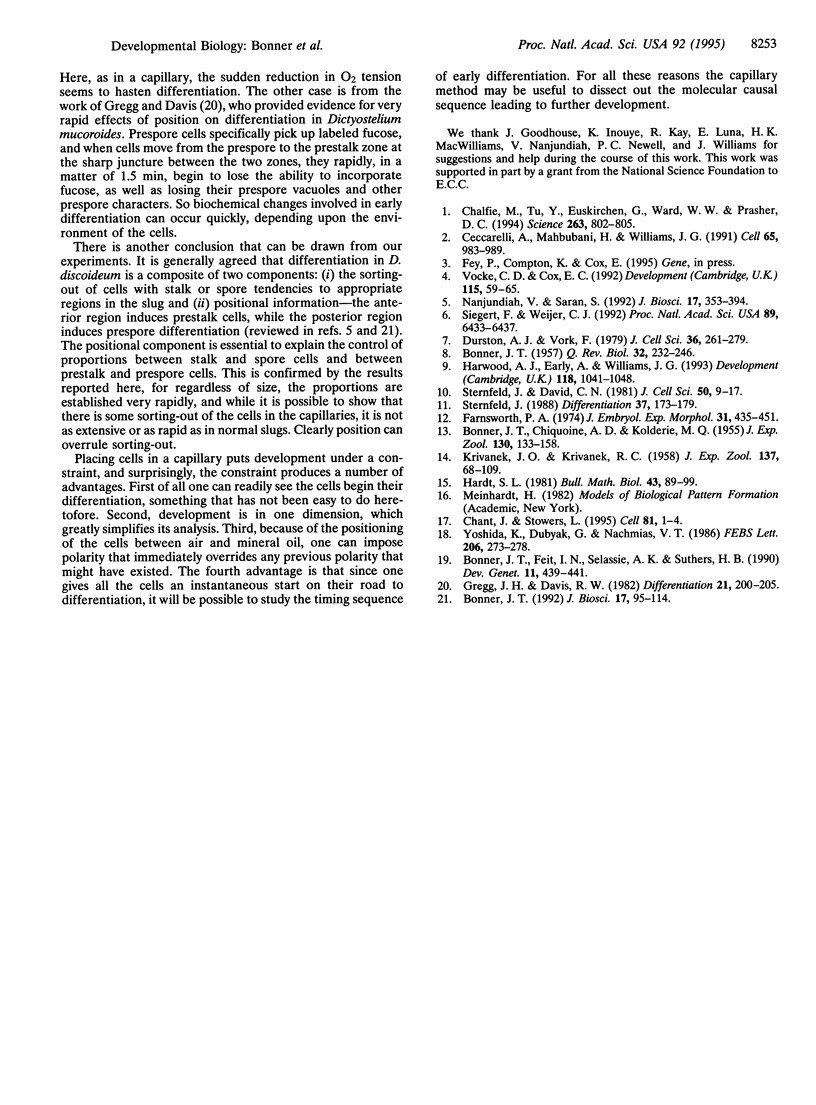
Images in this article
Selected References
These references are in PubMed. This may not be the complete list of references from this article.
- Ceccarelli A., Mahbubani H., Williams J. G. Positively and negatively acting signals regulating stalk cell and anterior-like cell differentiation in Dictyostelium. Cell. 1991 Jun 14;65(6):983–989. doi: 10.1016/0092-8674(91)90550-i. [DOI] [PubMed] [Google Scholar]
- Chalfie M., Tu Y., Euskirchen G., Ward W. W., Prasher D. C. Green fluorescent protein as a marker for gene expression. Science. 1994 Feb 11;263(5148):802–805. doi: 10.1126/science.8303295. [DOI] [PubMed] [Google Scholar]
- Chant J., Stowers L. GTPase cascades choreographing cellular behavior: movement, morphogenesis, and more. Cell. 1995 Apr 7;81(1):1–4. doi: 10.1016/0092-8674(95)90363-1. [DOI] [PubMed] [Google Scholar]
- Durston A. J., Vork F. A cinematographical study of the development of vitally stained Dictyostelium discoideum. J Cell Sci. 1979 Apr;36:261–279. doi: 10.1242/jcs.36.1.261. [DOI] [PubMed] [Google Scholar]
- Farnsworth P. Experimentally induced aberrations in the pattern of differentiation in the cellular slime mould Dictyostelium discoideum. J Embryol Exp Morphol. 1974 Apr;31(2):435–451. [PubMed] [Google Scholar]
- Harwood A. J., Early A., Williams J. G. A repressor controls the timing and spatial localisation of stalk cell-specific gene expression in Dictyostelium. Development. 1993 Aug;118(4):1041–1048. doi: 10.1242/dev.118.4.1041. [DOI] [PubMed] [Google Scholar]
- Siegert F., Weijer C. J. Three-dimensional scroll waves organize Dictyostelium slugs. Proc Natl Acad Sci U S A. 1992 Jul 15;89(14):6433–6437. doi: 10.1073/pnas.89.14.6433. [DOI] [PMC free article] [PubMed] [Google Scholar]
- Sternfeld J., David C. N. Oxygen gradients cause pattern orientation in Dictyostelium cell clumps. J Cell Sci. 1981 Aug;50:9–17. doi: 10.1242/jcs.50.1.9. [DOI] [PubMed] [Google Scholar]
- Vocke C. D., Cox E. C. Establishment and maintenance of stable spatial patterns in lacZ fusion transformants of Polysphondylium pallidum. Development. 1992 May;115(1):59–65. doi: 10.1242/dev.115.1.59. [DOI] [PubMed] [Google Scholar]
- Yoshida K., Dubyak G., Nachmias V. T. Rapid effects of phorbol ester on platelet shape change, cytoskeleton and calcium transient. FEBS Lett. 1986 Oct 6;206(2):273–278. doi: 10.1016/0014-5793(86)80995-4. [DOI] [PubMed] [Google Scholar]





